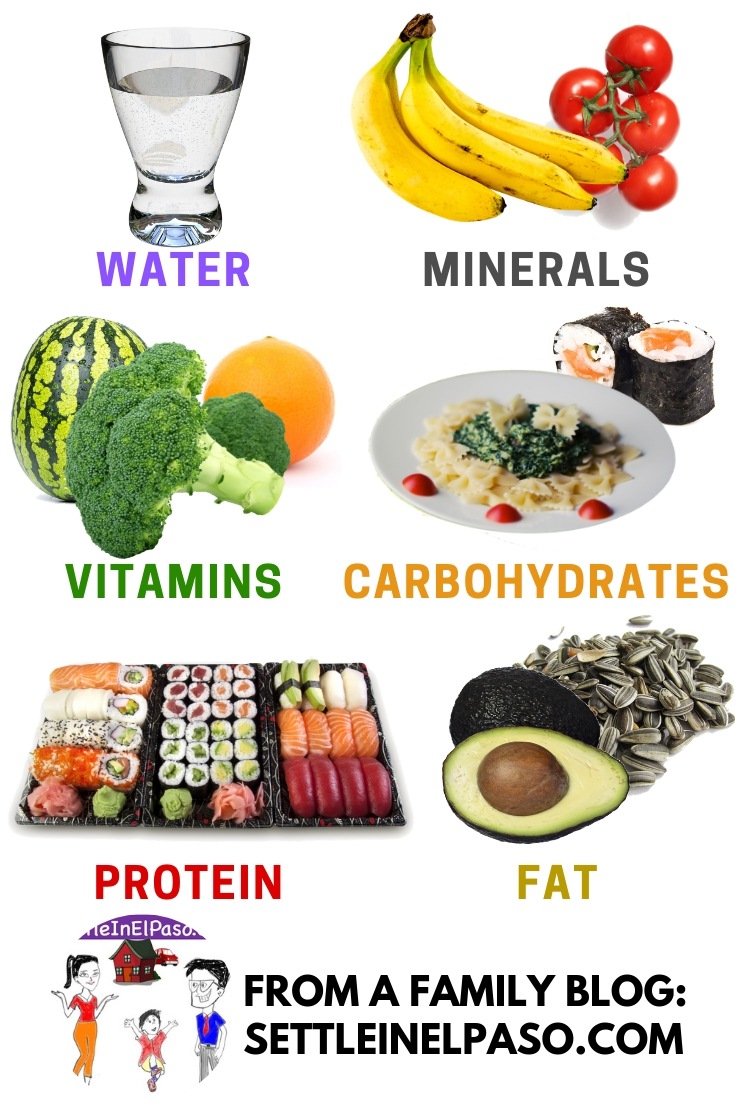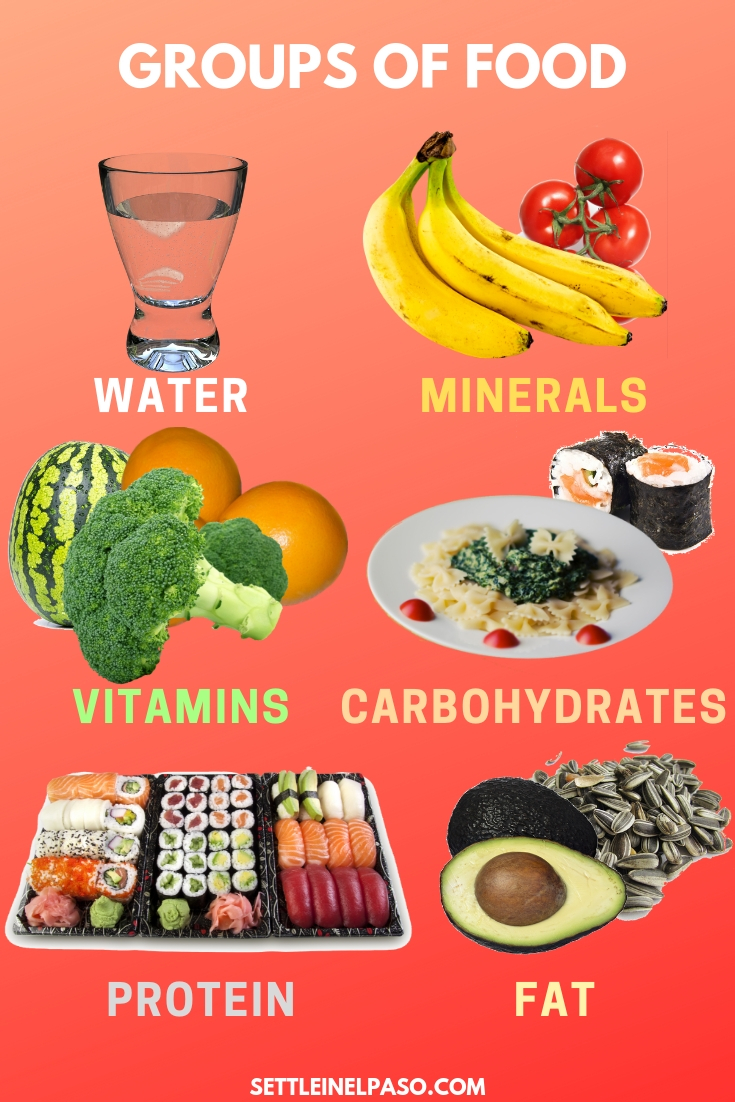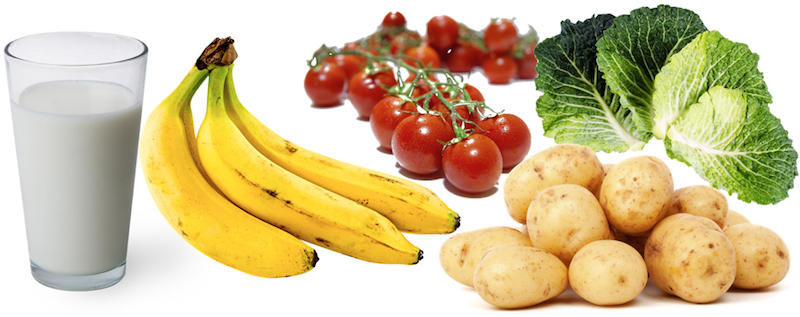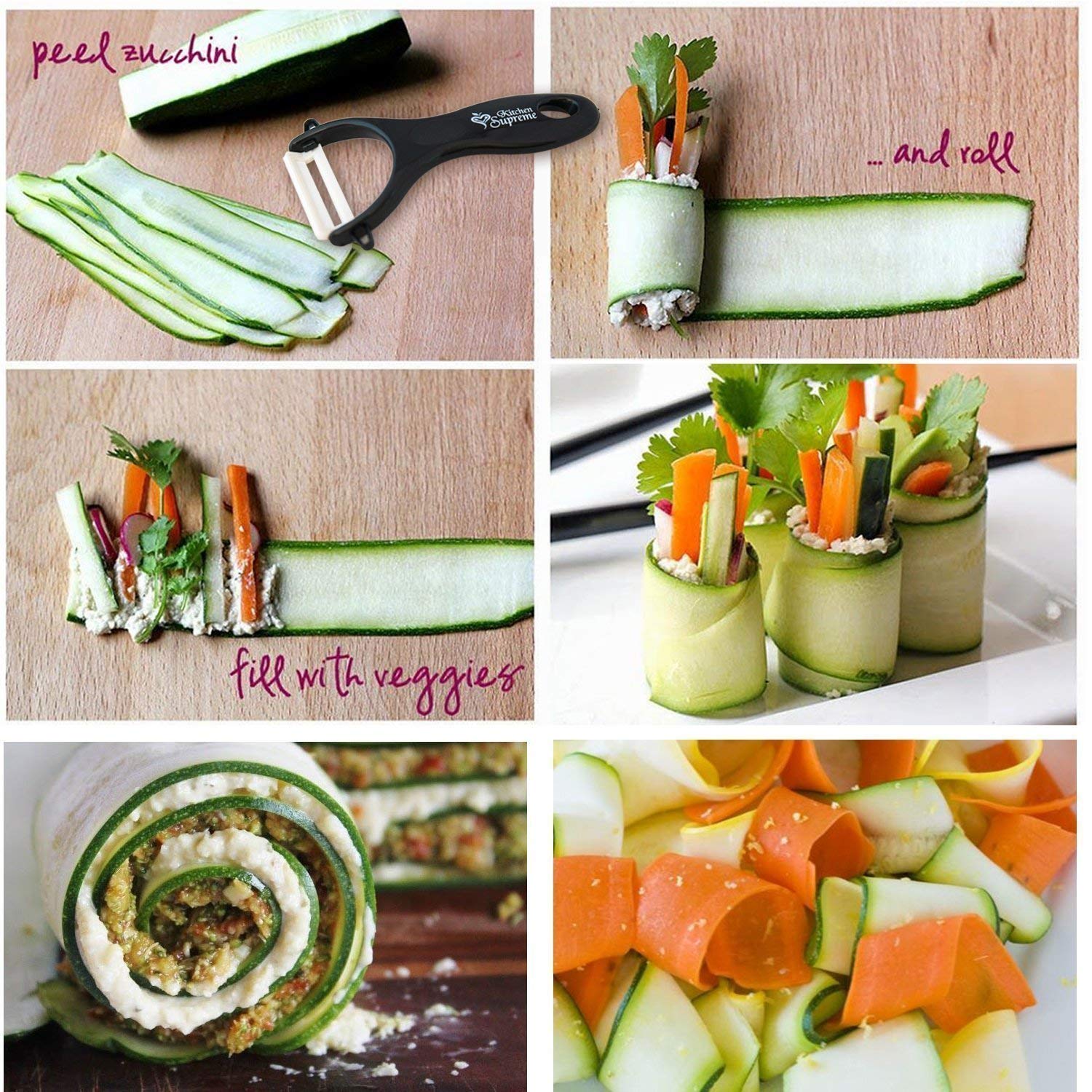
Six classes of food that provide us the nutrients and functioning agents to keep us healthy are listed below.
- Water,
- Minerals,
- Vitamins,
- Carbohydrates,
- Protein, and
- Fat.
The article goes beyond the six groups of food. It describes necessity and sources of fibers in food. In addition, the article describes some healthy cooking techniques that result in lesser oil and cholestorel in daily meals.
Food group 1: Water
Water is something that we do not keep track of as daily intake, but it is one of the most important ones. It builds the transportation system of the body. It carries nutrients from one part of the body to another. We have observed that Dear Son poops at least once every 24 hours only if he drinks enough water. 🙂 Water removes waste products from the body.
Along with regular water, other sources of water are soup, watermelon, cucumber, and juicy fruits. It is not essential that we drink filtered or bottled water. Some communities add fluoride in water. Such water is good for children to prevent cavity. Bottled water does not contain fluoride.
Filtering the tap water will limit the fluoride intake. This is why some pediatric dentists recommend tap water for children. We are blessed that fluoride is present naturally in El Paso’s water. However, whether we should drink it directly or not depends on the composition of minerals in the water. More information regarding the city water can be found in this article: Is your tap water safe to drink?
Food group 2: Minerals
Calcium, potassium, iron, and sodium are the four most important minerals a child needs. Calcium strengthens bones and teeth. Daily servings of milk, low-fat cheese, and yogurt ensure calcium intake. While Dear Son is fine with milk and cheese, he needs to focus more on the yogurt department.
Potassium helps in maintaining the volume of fluids in cells. It also prevents high blood pressure. Bananas, tomatoes, and potatoes are rich sources of potassium.
The body cannot make enough hemoglobin without enough iron. Iron-deficiency causes the production of fewer red blood cells than usual. As a result, the cells do not get enough oxygen they need. Iron-deficiency causes fatigue and anemia. It can even delay the development of a child. Beef, pork, chicken, beans, salmon, grains, leafy green vegetables, and eggs are good sources of iron.
We get enough sodium from the salt we use in our food. Sodium helps to maintain a healthy environment for cells. It is better to keep sodium intake lower because excessive of this may increase the blood pressure. When purchasing canned fruits, vegetables, soup, or pasta, it is better to pick the ones that do not have any added sodium or have low-sodium.
Food group 3: Vitamins
Vitamins have different biochemical functions. Vitamin A contributes to the health of eyes and is very important for children. Common sources of Vitamin A are yellow pumpkins, fruits, carrots, orange, leafy vegetables (like Spinach), and squash.
There are many different types of Vitamin B, deficiencies of which may cause beriberi, rash, anemia, and mouth diseases including glossitis. Good sources of B vitamins are oatmeal, meat, fish, vegetables, avocados, brown rice, potatoes, eggs, dairy products, bananas, liver, and tree nuts.
The deficiency of Vitamin C may cause scurvy. Many fruits, vegetables, and liver are rich sources of Vitamin C. Some high vitamin C sources that Dear Son likes are bananas, blueberries, broccoli, carrot, cherries, corn, cucumber, green beans, grape, mango, pear, peaches, plums, and watermelon.
Vitamin D-rich sources are fish, eggs, liver, and mushrooms. Vitamin D helps to maintain calcium absorption. Other than food sources, Vitamin D can be obtained from the sun.
Vitamin E deficiencies are rare. However, mild hemolytic anemia may be observed in newborns due to Vitamin E deficiency. Seeds, nuts, and vegetables are good sources of Vitamin E.
Vitamin K can be obtained from leafy green vegetables, liver, and egg yolks. Vitamin K deficiency may cause bleeding diathesis, gum bleeding, problematic blood clotting, and bleeding associated with the digestive system.
It is a good idea to keep a list of food that covers most of the vitamins.
Food group 4: Carbohydrates
Carbohydrate is essential for producing energy. The brain will not function well without this fuel. 🙂 Bread, tortilla, rice, pasta, oatmeal, and noodles are common sources of carbohydrates. Along with grains, some starchy vegetables are good sources of carbohydrates, for example, peas, corn, and potatoes. Of course, sugar contains carbohydrates but I won’t worry at all if sugar is not consumed.
Sometimes we forget to make sure that the grains are whole grains. Whole wheat bread, whole grain pasta, and brown rice are good as fiber-rich carbohydrate intakes. It is good to make sure that half of the grains a child consumes are whole grains. Whole grains confirm enough fiber intake to help digestion.
Food group 5: Protein
Protein is the main structural component of the cells of our body. It helps the reconstruction of decaying cells. The food a child eats must have enough protein because a child’s body grows at a much faster rate than a grown-up. Some sources of protein are — chicken, beef, pork, lamb, mutton, and fish. Other than meat or fish, dairy products, beans, and eggs are widely used protein sources.
We prefer low-fat meat as well as low-fat dairy products as protein sources for Dear Son. We give Dear Son 2% milk based on his pediatrician’s recommendation. Dear Son now likes eggs in both scrambled and boiled form although he did not want to eat eggs much in his early-toddler age.
Some high-protein sources for vegetarian preference are — tofu, lentils, black beans, lima beans, chickpeas, almonds, cashews, pumpkin seed, spinach, avocado, broccoli, and Brussels sprouts. Dear Son used to like black bean and lima beans when he was a toddler. Too bad that we did not continue all these vegetarian preferences. We need to get back to giving him good vegetable protein sources.
Food group 6: Fat
We generally use canola oil or olive oil as our cooking oil. We prefer cholesterol-free oil for cooking.
Fat helps to absorb fat-soluble vitamins. Such vitamins include A, D, E and K. Omega-3 fatty acid-rich food is preferable because they help develop brain and bones in addition to providing energy. You will find milk with added Omega-3 in the supermarket. We do not drink Omega-3 added milk because it smells fishy. Although Dear Son likes cooked fish, he does not like the raw-fishy smell in his milk. Fish and vegetable oils are two good sources of Omega-3 substances. Avocado, nuts, and seeds are rich sources of fat as well.
We make sure of as little intake of saturated fats as possible. We avoid high-fat meats and full-fat dairy for Dear Son.
Fiber in food
Fiber itself is not considered a food group in the literature (most of the times). Still, fiber in food is important both for children and grownups. Fiber results in regular bowel movement, clean intestines, and slow absorption of sugar. Since fiber slows down the absorption of sugar, fiber is expected to reduce the risk of developing Type 2 diabetes.
Whole-wheat flour is a good source of fiber. The fiber in brown rice is known to lower cholesterol. Vegetables, such as cauliflower, green beans, potatoes, have a good amount of fiber. The following fruits are a good source of fiber — raspberries, mangoes, apples (with peels), persimmon, bananas, oranges, and strawberries.
Ensuring a balance between food groups in meals is essential. Along with the six classes of food in our daily meals, we need to ensure that we are using a healthy cooking style.
Ensuring a healthy cooking style
In another post, we explained our healthy cooking style. We avoid deep fried food but still we love the heavenly taste of fries. Hot air frying, instead of deep frying is a great technique to reduce oil consumption.
An adjustable food slicer helps us cutting the vegetables, including potatoes, sweet potatoes, and zucchinis in a preferred size. The ability to make french fries at home without deep frying has made us very happy.
Time to time, we use a Spiralizer to make noodles of vegetables like zucchini, carrot, cucumber, and squash.
Vegetable peels using a peeler can be a great alternative of bacon to cover vegetable stuffings.
Concluding remarks
It is difficult to maintain all groups of food. The easiest thing to do is to maintain a list that covers all six essential nutrients. We can modify that list time-to-time to include seasonal delights. Diversity in food is essential to ensure a child’s healthy diet.
Note: We published the article first on January 31, 2017. The article went through several revisions in later dates.
Subscribe to receive notifications on our new posts.














Thanks for sharing, the post is really relevant that normal people can’t resist.
These early eating habits can last a lifetime!!
I am glad that you liked the post. Have a wonderful weekend.
I love the spiralizer. My Nana used to tempt me with the ricer.
Both are handy utensils, no doubt. Thank you for visiting and commenting. Have a wonderful week ahead.
I am, reading the article at the right time. Soon we will introduce soild food to our dear son. He is almost five months old. When he becomes six, we will have to observce rice feeding ceremony for our dear son. On a certain auspicious day, we relatives and friends will gather and we will let him taste various food. Thanks for sharing this useful and informative article.
How adorable! It is awesome to arrange a family gathering on the occasion. Solid food is definitely a milestone. Thank you for visiting and commenting. Have a wonderful Sunday.
This information is very helpful. It reminds parents to give their children a balanced meal that contains all the nutrients you have mentioned. The drinks should also be considered. It’s good that you pointed out things about drinking water. We all know that it’s the healthiest drink of all and yet most parents let their children drink more juice and softdrinks. I know I will have my own child one day and I will let him get used with water. Also, I would like to add antioxidants as part of the diet. It is very important nowadays. It helps combat the bad free radicals that destroy our cells. It promotes cell longevity which can help in the growth and development of children.
This will certainly give people like us that are looking for ways to ensure we get the best out of the food we eat every day. I must say that I really missed taking lots of meat while little and that is what I won’t let my kids pass through.
Very informative blog you created here. It will sure help the parents to know what to choose for their child to feed. Probably all the parents know that vitamins, nutrients, and minerals are very important for a child to grow and develop but they should know that water also is very important, also as you have said protein and fats will help to develop the child growth much easier and much healthier!
To create healthy eating habits in our kids should be as important for parents as it is to teach them values. Childhood is the best time to teach them how important it is to actually take care of our bodies and what we eat. This kind of posts are really really helpful.
Happy to know that you liked this post. I agree that childhood is the best time to build a good food habit. Thank you for visiting and commenting. Have a wonderful weekend.
Excellent overview that will help many parents ensure their children are getting the necessary nutrients in their foods. Like where you are, it is fine here to drink the tap water 🙂
Thank you for your comment and sharing the post in the social media. We are happy to know that your city water is good to drink ad well. Thanks again for visiting. Have a wonderful weekend ahead.
I’m not a parent myself but have been asked to take care of my cousins a couple of times. When I sit them for a day and it’s eating time is seems like all they really want is something sweet and complain a lot when it comes to veggies. I am always worried that when creating a lunch for them that the lunch doesn’t include all the nutrition they need so this is a great post to follow for next time I need to fill their always hungry little tummies.
? same sceneries with veggies for most kids. Kids dream of lunch and dinner with candy ? and chocolate ?. I am glad to know that you liked this post. Have a wonderful day.
I know you are busy! If you have time, I nominated you for the Blogger Recognition Award. This is all new to me, so play if you have time. ?
http://wp.me/p4oQp5-E3
Dear Ipuna, We are honored! Thanks so much for the nomination. We will definitely try to participate. Have a great wonderful weekend.
Great post!! Reinforces what I feel about the values I am instilling in my daughter as it relates to food and making better choices.
Definitely, we wrote this to remind ourselves about the values you are referring to. Thanks a lot for visiting and commenting. Have a wonderful evening!
What an amazing post! Great work! Amazing message! ❤️
We are glad to know that you liked this post! Thanks for stopping by and writing a comment. Have a wonderful weekend.
I believe that’s true. I also believe our metabolism changes to that of the child inside and remains that way after birth. I don’t know if others have noticed that as well. Why couldn’t my last child have been my skinny child? Darn.
I am Dear Mom and I am responding although Dear Hubby wrote this post. I did not notice the metabolism changes. At least in my case, I went back to my earlier weight within a year or so. Dear son is very much on the skinny side. So, there may be a connection 🙂 On the other hand, how I wish Dear Son remained a chubby child 🙁 Thank you very much for visiting and writing a beautiful and thoughtful comment.
Informative post! Thanks for sharing.
We are glad to know that you liked the post. Thanks for visiting.